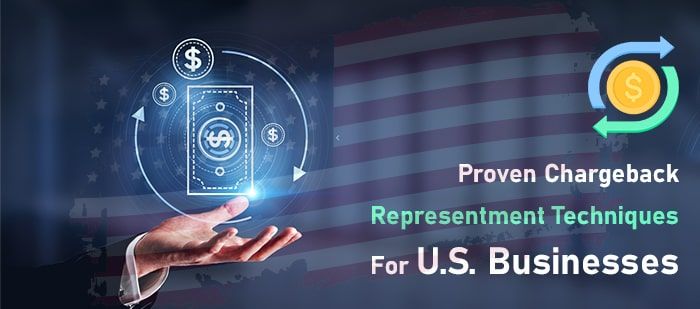
Chargebacks can pose a significant challenge for U.S. businesses, impacting both revenue and customer relationships. Understanding effective chargeback representment strategies is crucial for merchants aiming to recover lost funds and maintain a healthy bottom line.
This blog post will delve into proven techniques that can empower businesses to navigate the often-complex world of chargebacks. From gathering compelling evidence to presenting a solid case to payment processors, we’ll explore actionable tips for chargeback representment that can enhance your chances of success.
Whether you are a seasoned merchant or just starting out, these insights will equip you with the tools necessary to tackle chargebacks head-on, turning potential setbacks into opportunities for growth. Join us as we uncover essential practices that will not only safeguard your business but also bolster your reputation in the marketplace.
Understanding the Chargeback Process
To effectively manage chargebacks, it’s essential to understand the process from start to finish. A chargeback begins when a cardholder disputes a transaction, typically due to reasons such as fraud, non-delivery of goods, or dissatisfaction with a purchase. The cardholder contacts their issuing bank to initiate the dispute, triggering an investigation. The issuing bank then reaches out to the merchant’s acquiring bank, who in turn notifies the merchant of the chargeback.
At this stage, the merchant has the opportunity to respond by providing evidence that supports the legitimacy of the transaction. This response is known as chargeback representment. The documentation required can include receipts, shipping confirmations, communication records, and any other relevant evidence. The acquiring bank reviews the merchant’s submission and forwards it to the issuing bank for a final decision.
Understanding the timelines and documentation requirements is crucial. Each card network (Visa, MasterCard, etc.) has its own set of rules and deadlines for responding to chargebacks. Failure to meet these deadlines can result in an automatic loss of the dispute. Familiarizing yourself with these specifics can significantly impact the success rate of your chargeback representment efforts.
Some Related Blogs
- How to Establish a Strong Chargeback Prevention Strategy for U.S. E-Commerce Firms
- The Impact of the 2024 Payment Services Directive (PSD2) on U.S. Chargeback Processes
- Chargeback Dispute Resolution: Best Practices for U.S. E-Commerce Retailers
- Understanding Chargeback Rights and Obligations for U.S. Businesses and Consumers
Gathering and Organizing Necessary Documentation
One of the key elements of a successful chargeback representment strategy is gathering and organizing the necessary documentation. The objective is to compile compelling evidence that supports the legitimacy of the disputed transaction. Start by collecting all relevant transaction records, including sales receipts, invoices, and shipping confirmations. Ensure that these documents are clear, legible, and complete, as any missing or ambiguous information can weaken your case.
In addition to transaction records, gather any communication logs between your business and the customer. This may include emails, chat transcripts, and phone call records that can provide context and prove that the customer received what they ordered or agreed to the terms of the sale. It’s also beneficial to include any photos or videos of the delivered products, particularly if they are high-value or custom items.
Organizing these documents systematically is crucial. Create a checklist to ensure that you have all necessary evidence and arrange the documentation in a logical order, making it easy for the acquiring bank to review. Using cloud-based storage solutions can help keep these records accessible and well-organized, ensuring that you can respond promptly and efficiently to any chargeback notifications.
Crafting a Strong Representment Case
The cornerstone of an effective chargeback representment strategy lies in crafting a compelling and coherent case. Begin by clearly presenting the context and details of the transaction, ensuring that the narrative is easy to follow. Highlight key pieces of evidence such as transaction records, shipping confirmations, and customer communications, and explain how each piece supports the validity of the transaction. Use concise, professional language and avoid jargon that could confuse the reviewer.
Tailor your response to address the specific reason for the chargeback. For example, if the chargeback is due to non-delivery of goods, provide detailed shipping records and proof of delivery. If it’s due to alleged fraud, include evidence that verifies the cardholder’s identity and consent to the transaction. Structuring your documentation logically is crucial; use headings and bullet points to make the information easily navigable.
![]()
Email us anytime!
Email customer service 24/7
![]()
Call us anytime!
Reach customer care 24/7 at +1 (888) 901-8653
Additionally, reference the relevant card network rules and guidelines to strengthen your argument. Demonstrating that you have adhered to these rules not only validates your case but also shows due diligence in maintaining compliance. This thorough and methodical approach can significantly increase the likelihood of a favorable outcome.
Utilizing Technology and Software Solutions
In today’s digital age, leveraging technology and software solutions can significantly streamline the chargeback representment process for U.S. businesses. Automated chargeback management platforms can help merchants efficiently track, manage, and respond to disputes.
These platforms often integrate with existing payment systems, automatically flagging chargebacks and compiling the necessary documentation for representment. Additionally, advanced analytics tools can identify patterns and trends in chargeback data, enabling businesses to proactively address common issues and reduce the likelihood of future disputes.
Fraud detection software is another valuable asset, as it can help verify the legitimacy of transactions in real-time, reducing the occurrence of fraudulent chargebacks.
Machine learning algorithms can assess various risk factors and provide alerts for suspicious activities, allowing merchants to take immediate action. Customer relationship management (CRM) systems can also be integrated to store and retrieve communication logs, ensuring that all relevant interactions are easily accessible for representment cases.
Investing in these technologies not only enhances efficiency but also improves the accuracy and thoroughness of chargeback responses. By automating repetitive tasks and providing actionable insights, technology solutions empower businesses to handle chargebacks more effectively, ultimately protecting their revenue and reputation.


